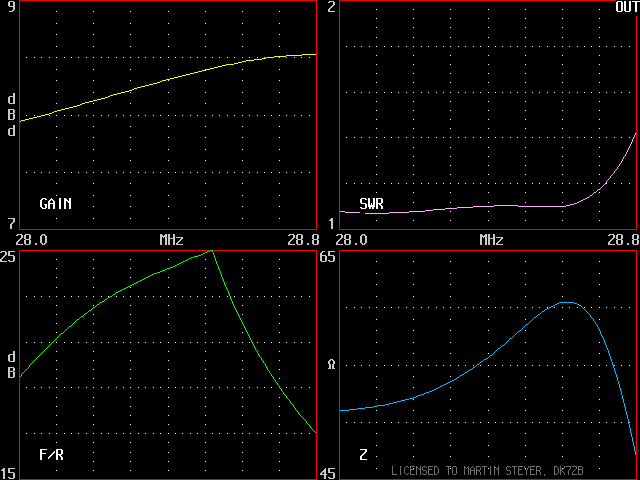 |
Boom 9,25 m Gain 9,01 dBd = 11,16 dBi
2x5-El.-Yagi stacked, built by Tom, DK3EE |
| 4-El-10m | |||
| 4-El.-15m | |||
| 4-El.-20m |
5-El-10m |
5-Element-10-m-DK7ZB-Yagi with 28 Ohm
A second 5-El.-50-Ohm-Yagi with 7,5 m Boom see down
 |
Boom 9,25 m Gain 9,01 dBd = 11,16 dBi
2x5-El.-Yagi stacked, built by Tom, DK3EE |
Elements of the
5-El.-10-m-28-Ohm-Yagi, lengths for
one
element-half:
Instead of 16/12-mm elements it is possible to use 5/8 in and 1/2 in elements (17,1/12,7 mm) without any changes!
The relation for the tapering gives exactly the same data!
|
|
16x1,5mm |
12x1mm |
Position |
|
Ref |
1,00
m |
1,63
m |
0m |
|
Rad |
1,00
m |
1,56
m |
1,790 m |
|
Dir |
1,00
m |
1,475
m |
3,605 m |
|
Dir |
1,00
m |
1,46
m |
6,640 m |
| Dir 3 | 1,00 m | 1,39 m | 9,250 m |
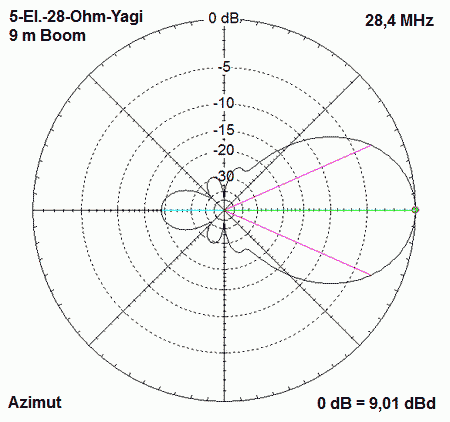 |
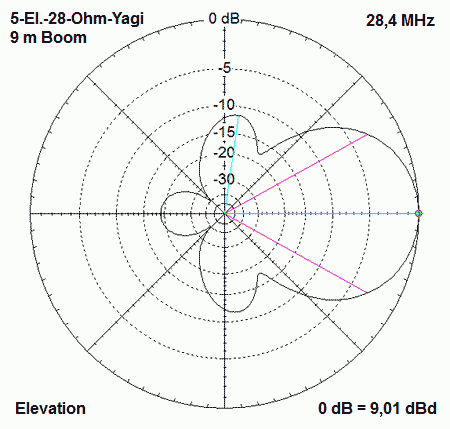 |
![]()
5-Element-10-m-DK7ZB-Yagi with 50 Ohm
|
|
Boom 7,50 m
Match with Balun 1:1 or Koax-Choke Yagi built by DH9FAB |
Short data for the Yagi at the begin, in the middle part and at the end of the band
Plot with the NEC-II-reference of YO7.2 by K6STI
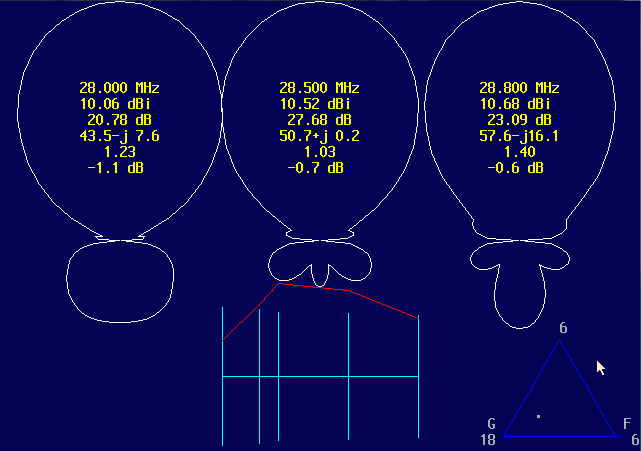
The meaning of the data :
Frequency, gain, F/R, radiation resistance (impedance), SWR and loss against a theoretical defined maximum- gain-Yagi with the given boomlength. Remember that this gain is only available with very low impedance and extrem low bandwidth!
Elements of the 5-El.-10m-50Ohm-Yagi, lengths for
one
element-half:
Instead of 16/12-mm elements it is possible to use 5/8 in and 1/2 in elements (17,1/12,7 mm) without any changes! The relation for the tapering gives exactly the same data!
|
|
16x1,5mm |
12x1mm |
Position |
|
Ref |
1,00
m |
1,68
m |
0m |
|
Rad |
1,00
m |
1,62
m |
1,43 m |
|
Dir |
1,00
m |
1,49
m |
2,16 m |
|
Dir |
1,00
m |
1,44
m |
4,80 m |
| Dir 3 | 1,00 m | 1,385 m | 7,50 m |
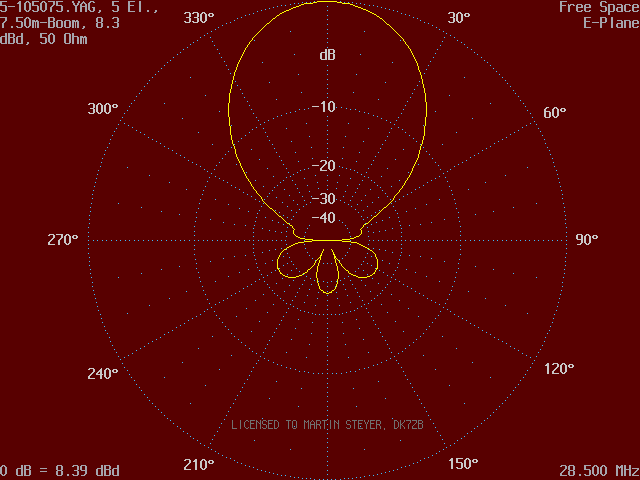
Elevation-diagram (vertical pattern):

![]()
Gain, SWR, F/R and Z versus frequency:
